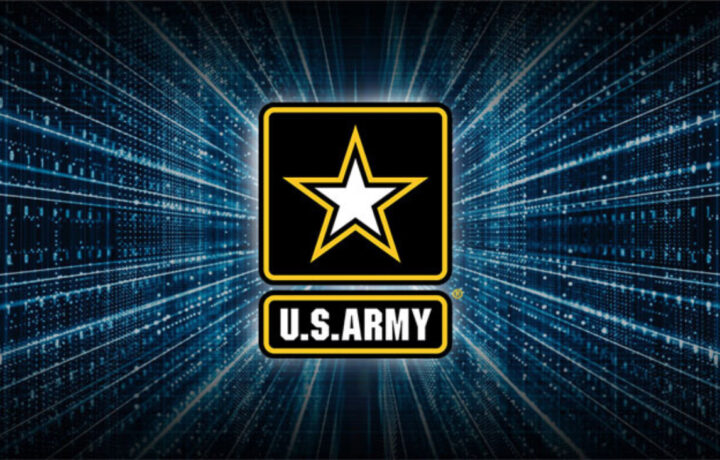The United States Navy’s old recruitment ads on TV used to show sailors in exotic lands, while the United States Marine Corps compared the forging of its iconic Mameluke sword to that of turning a recruit into a marine. Those ads were straightforward, but may not resonate with certain younger Americans that the military needs to fill its ranks.
Seeing the challenge, the United States Army’s Special Operations Command has gone a different direction in reaching Gen Z recruits who are not usually interested in planes, tanks, or firearms, by releasing what could be the most disruptive recruiting teaser to date.
Officers at the 4th Psychological Operations Group (Airborne), based at Fort Liberty, NC, in late 2021 were charged with attracting the next generation of PsyOp enlistees, and they quickly realized that the standard video of soldiers driving tanks wouldn’t work. As experts in persuasion and influence, PsyOp soldiers don’t often fit the mold of an average U.S. Army recruit.
As such individuals typically live and think outside traditional norms, recruiting efforts need to meet them through non-traditional means.
“There is a little bit of a change with the newer generation,” said Master Sgt. Matthew Johnson, the non-commissioned officer in charge of U.S. Army Special Operations Recruiting. “A lot of people who join the Army these days — they like to see the steps of the process and they want to know what is out there for them.”
Very Unique and Even Disturbing Videos
Two years ago the 4th PsyOps Group released its original “Ghost in the Machine” video. It might have been mistaken for an upcoming video game or the trailer for a David Lynch film with a low hum, and the caption reading “If your opponent is choleric temper, seek to irritate him. Pretend to be weak, that he may grow arrogant.”
The video then offered a mix of visual imagery along with sound bites from old news stories and political speeches – while the next caption reads, “have you ever wondered… who is pulling the strings.”
Released in the middle of the night with little fanfare, it was meant to be the sort of thing that would get people thinking. It was aimed at those who ask questions; seek the truth and who – at least on the surface – might not seem to be the easily molded warfighter of tomorrow. The ad generated a lot of online chatter, and apparently was a success, at least enough that a follow-up was released this week.
Ghosts With the Most
Soon after being released on YouTube on Friday, the thee-minute long video racked up more than 75,000 views. Small numbers compared to a Taylor Swift video to be sure, but the PsyOps Group isn’t looking for eyeballs, it is seeking those few individuals that are well-suited to irregular warfare.
Recruiting techniques in general have had to evolve following the U.S. military’s two-decade-long involvement in Afghanistan, an ever-changing and divided political landscape, and of course the global pandemic. This generation has also grown up with smartphones being part of daily life.
That presented challenges, which the PsyOps Group also sees as opportunities.
“If the (recruit) feels like you are pandering, you’ve lost them,” said an identity protected Army PsyOp officer who led the charge to meet the recruiting challenge. Known by the pseudonym Gray, he added, “Special Forces has (recruiting) easy. You show some guys on a plane, or in a halo jump, or on a stack and there’s an infinite amount of ways to make that look appealing. With an intangible concept, you do it through art.”
Video: GHOSTS IN THE MACHINE 2
Igniting Curiosity
The group has described the ideal PsyOps candidate as someone who is very cerebral and analytical, and is a person who can dive into creative problem solving. It requires casting a wide net, and the videos are part of the greater approach.
“I feel like I can go into any high school in America and say — whether you’re in the robotics club, or the STEM club, or you’re a middle linebacker, or you build sets for the drama club — if you want to make a difference in the world, we’ve got a place for you,” said Col. Mike Burns, a Public Affairs Officer with U.S. Special Operations Command. “You’re going to be welcomed, you’ll be part of a diverse team, and you’re going to make a difference.”
So different was the initial ad that some on social media didn’t even believe it was an official U.S. Army product, while the use of non-traditional imagery was questioned by some Army leaders.
The videos, which were produced entirely in-house, required only minor elements to be acquired – such as stock footage and sound effects – but most of the scenes and images were original and were shot and produced in the woods surrounding Fort Liberty. In addition, props such as a mannequin head, cassette tape, and U.S. Army challenge coins were acquired and used to create a professional product that looks like a production house would have created.
The original video received no shortage of chatter, and that will likely be the case with the Ghosts in the Machine 2, but the actual success will be seen in the recruiting classes over the next half decade or so.




